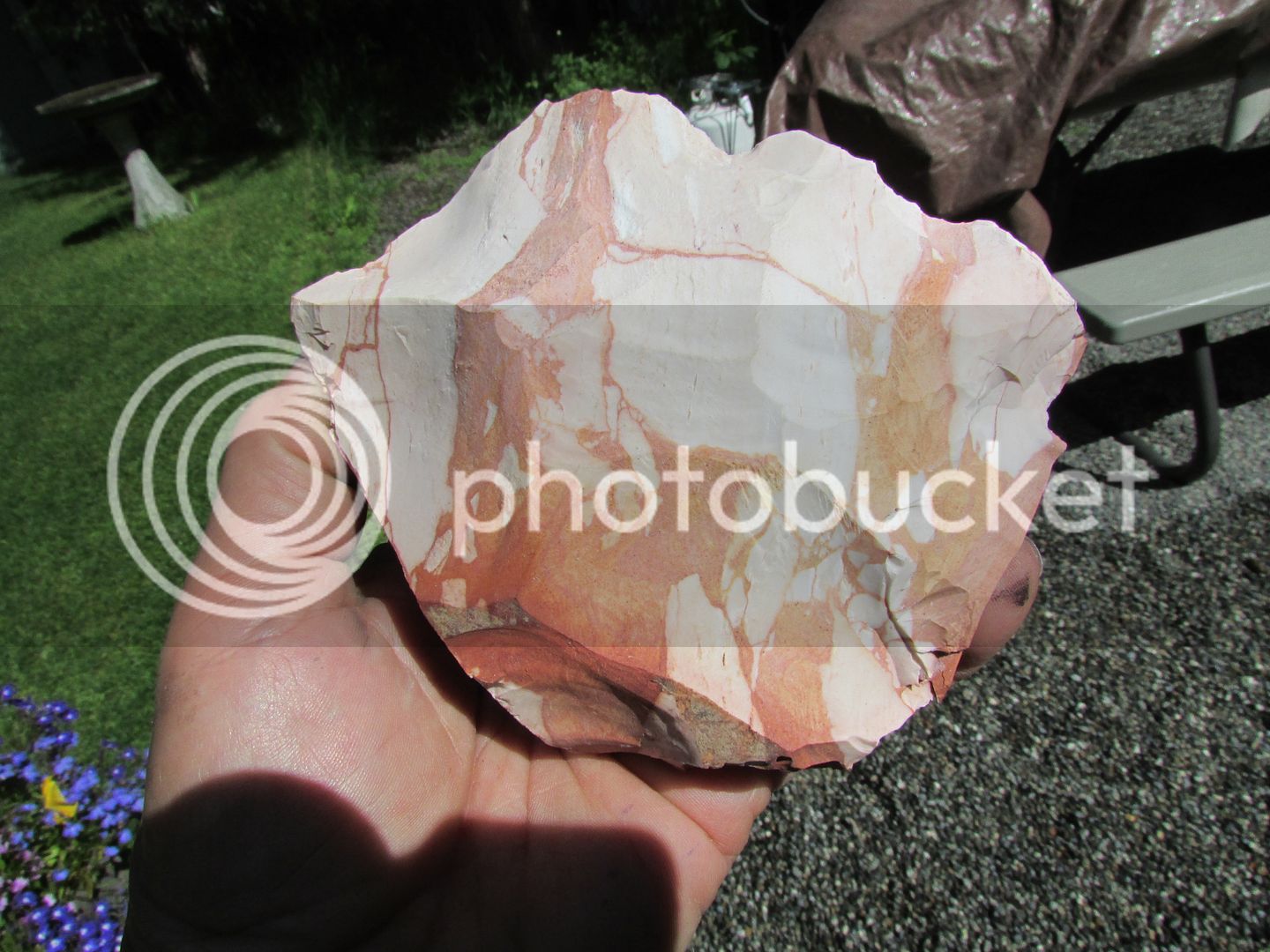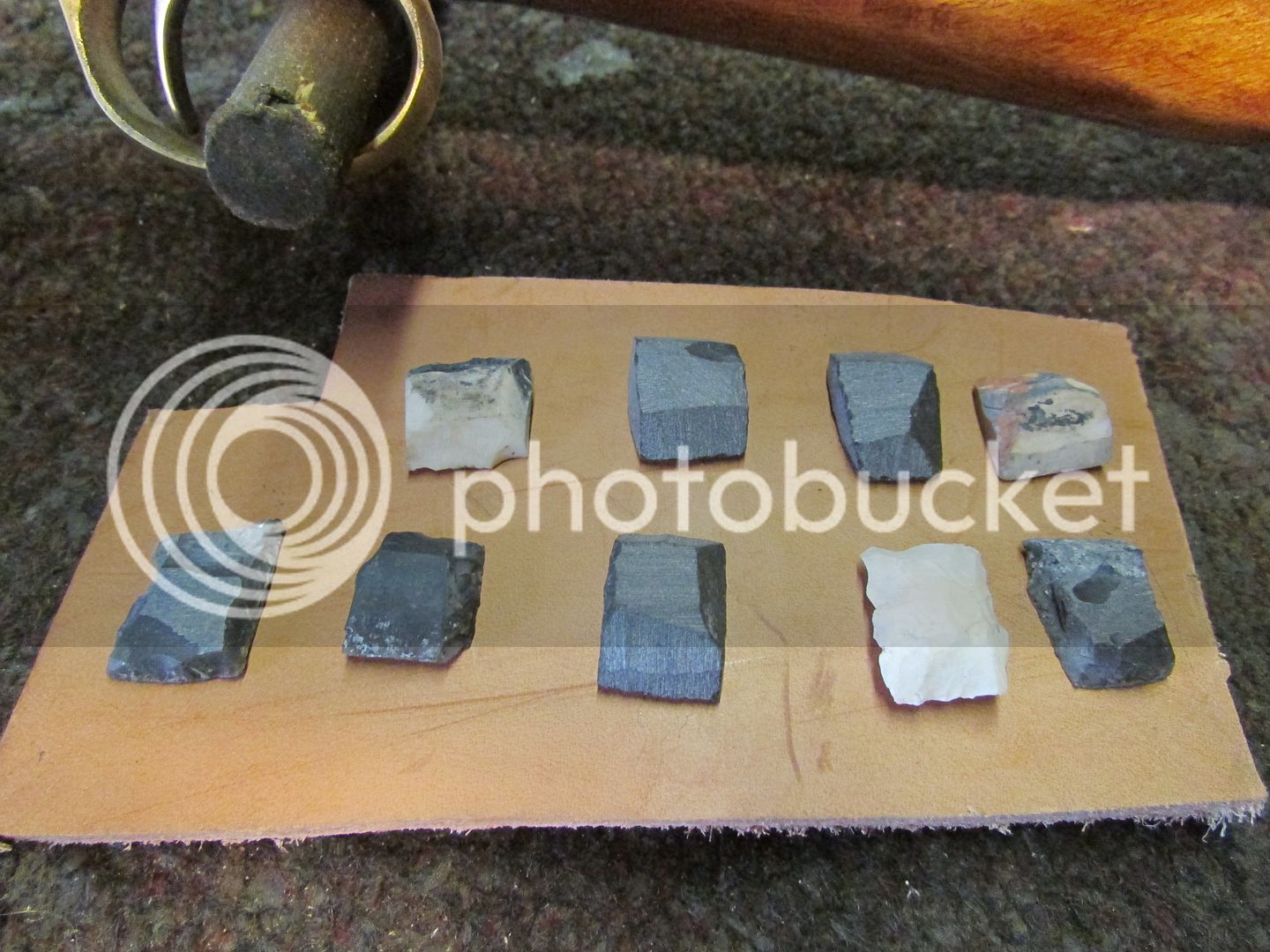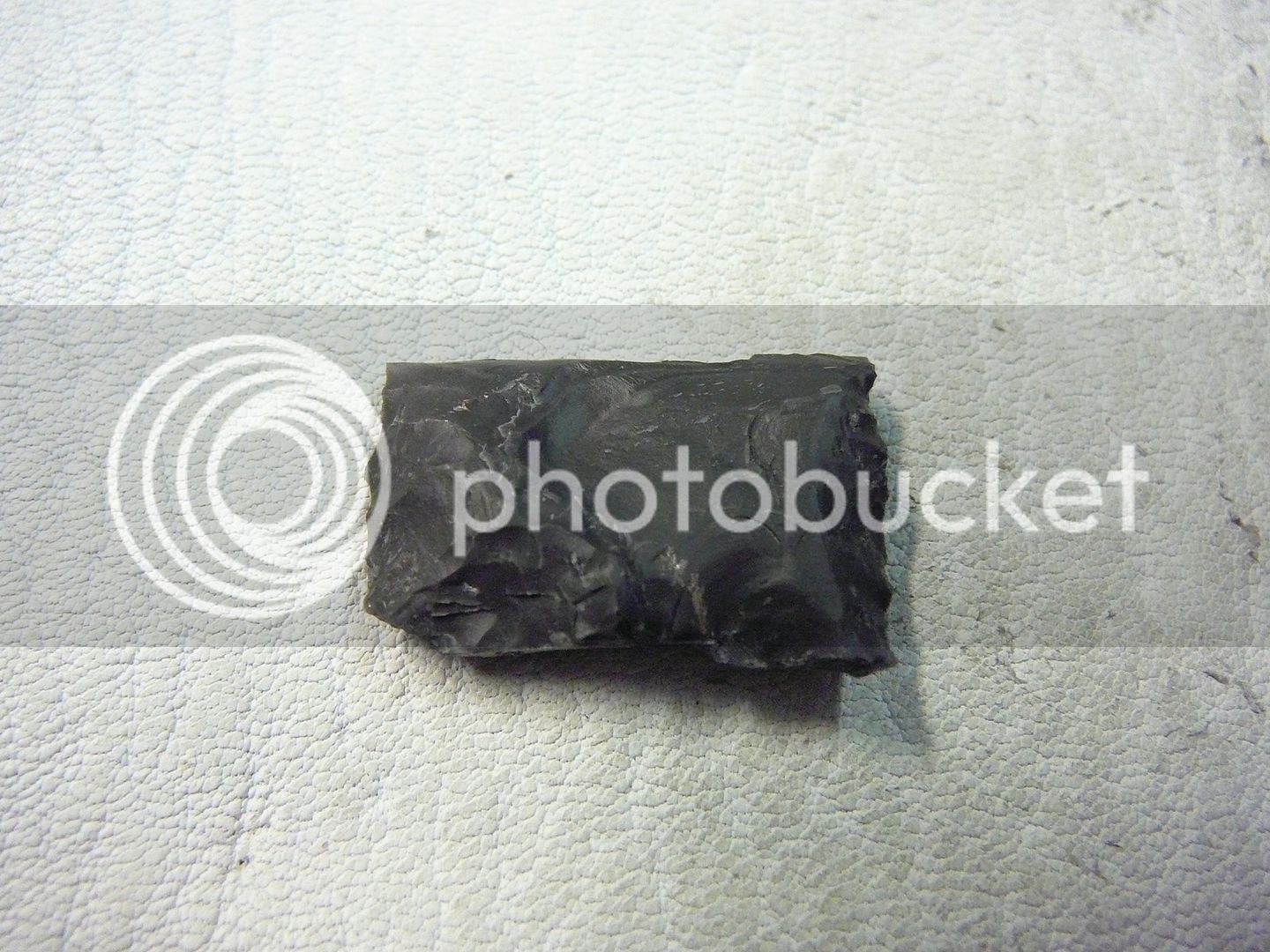I would think maybe the additional weight from the lead wrap “could “ cause issue with lock internals.
-
This community needs YOUR help today. We rely 100% on Supporting Memberships to fund our efforts. With the ever increasing fees of everything, we need help. We need more Supporting Members, today. Please invest back into this community. I will ship a few decals too in addition to all the account perks you get.

Sign up here: https://www.muzzleloadingforum.com/account/upgrades -
Friends, our 2nd Amendment rights are always under attack and the NRA has been a constant for decades in helping fight that fight.
We have partnered with the NRA to offer you a discount on membership and Muzzleloading Forum gets a small percentage too of each membership, so you are supporting both the NRA and us.
Use this link to sign up please; https://membership.nra.org/recruiters/join/XR045103
You are using an out of date browser. It may not display this or other websites correctly.
You should upgrade or use an alternative browser.
You should upgrade or use an alternative browser.
Flint Life
- Thread starter Bent Sight
- Start date

Help Support Muzzleloading Forum:
This site may earn a commission from merchant affiliate
links, including eBay, Amazon, and others.
rich pierce
70 Cal.
Word is that high speed photography shows that some goose-neck cocks actually flex when the flint strikes the frizzen. Not so with reinforced, double throated cocks. If this is accepted as the result of a high momentum object striking a resisting object, then the added weight of a lead wrap around tge flint, or it’s stiffness, or both, could contribute to fatigue or breakage of a cock.
I can see where something like that could possible happen.
I had never thought of it , but the goose neck could very easily be the weak point.
I would think the angle the cock hits, plus the resistance from the frizzen spring maybe being too tight .
Some locks just strike very hard, I have a Peter Allen made lock on one of my guns and it hits really hard .
But it sparks good and goes off most every time ! So I ain’t complaining.
If I were a lock Manufacturer , I wouldn’t what additional weight from a lead wrap bearing down on my lock.
All be it just a few grns, still the more weight the more chance for damage.
Thanks for the info Rich.
Did Pletch do the filming ?
I had never thought of it , but the goose neck could very easily be the weak point.
I would think the angle the cock hits, plus the resistance from the frizzen spring maybe being too tight .
Some locks just strike very hard, I have a Peter Allen made lock on one of my guns and it hits really hard .
But it sparks good and goes off most every time ! So I ain’t complaining.
If I were a lock Manufacturer , I wouldn’t what additional weight from a lead wrap bearing down on my lock.
All be it just a few grns, still the more weight the more chance for damage.
Thanks for the info Rich.
Did Pletch do the filming ?
- Joined
- Dec 25, 2011
- Messages
- 8,797
- Reaction score
- 3,793
Do a little test some time and I think you will get over wiping a flint edge with your bare fingers.
Clean and sharpen the edge then do a couple of cycles with it and note the spark shower. Now wipe the same edge with your thumb or fingers several times and repeat the test.
I think you will note a reduction in sparks. It may be that I just have more oil in my fingers than some folks but I have seen the difference.
Flint life can be greatly extended if you will take the time to learn how to pressure flake instead of percussion flake your flint edges.
It removes much less material and maintains a much better edge profile for more sparks and less wear on both the flint edge and frizzen face.
Clean and sharpen the edge then do a couple of cycles with it and note the spark shower. Now wipe the same edge with your thumb or fingers several times and repeat the test.
I think you will note a reduction in sparks. It may be that I just have more oil in my fingers than some folks but I have seen the difference.
Flint life can be greatly extended if you will take the time to learn how to pressure flake instead of percussion flake your flint edges.
It removes much less material and maintains a much better edge profile for more sparks and less wear on both the flint edge and frizzen face.
- Joined
- Dec 25, 2011
- Messages
- 8,797
- Reaction score
- 3,793
What is hard on lock internals and frizzen faces is the practice of shapening flints by holding down on the frizzen and pulling the hammer backwards to sharpen it.
This practice does very little to reshape and properly sharpen the edge. Learning a bit about flint knapping will teach one very quickly about how flint fractures and the angles and platform required to make it respond to your shaping wishes.
This practice does very little to reshape and properly sharpen the edge. Learning a bit about flint knapping will teach one very quickly about how flint fractures and the angles and platform required to make it respond to your shaping wishes.
- Joined
- Dec 25, 2011
- Messages
- 8,797
- Reaction score
- 3,793
If I were you I would take the time to learn how to knapp your own then you can make them nice flat,long and sharp.
I really prefer the heat treated Keokuk chert spawls out of Oklahoma for all my flints. The chert seems to be tougher than the black English or blond French stuff I've bought from TOTW.
I can make them quite thin with no back ridge and they don't break up even on large locks.
I really prefer the heat treated Keokuk chert spawls out of Oklahoma for all my flints. The chert seems to be tougher than the black English or blond French stuff I've bought from TOTW.
I can make them quite thin with no back ridge and they don't break up even on large locks.
- Joined
- Dec 25, 2011
- Messages
- 8,797
- Reaction score
- 3,793
shaving angle of +/- 60 degrees and try for 2/3 frizzen length contact is all I could add........
Great info Guys Thanks for posting!
Those are some good looking rocks MD ,
I liked the ones Rich made, but I’m slowly exhausting
my supply of those....
Those are some good looking rocks MD ,
I liked the ones Rich made, but I’m slowly exhausting
my supply of those....
What is hard on lock internals and frizzen faces is the practice of shapening flints by holding down on the frizzen and pulling the hammer backwards to sharpen it.
Agree. I have never used that technique for fear of damaging the lock. The application of that kind of pressure scares me. :shocked2:
50-70 shots for a $2 flint... yet another reason flints rule over caps! You have to pay about $10 or better for a tin of 100 caps these days.
I'm sure someday I will make the Press/News Media someday when they raid my basement:
"Arsenal of over 200 gun flints discovered in home!"
"Arsenal of over 200 gun flints discovered in home!"
Stumpkiller said:I'm sure someday I will make the Press/News Media someday when they raid my basement:
"Arsenal of over 200 gun flints discovered in home!"
Only 200? Well.....that's a beginning. :wink:
- Joined
- Mar 23, 2015
- Messages
- 4,897
- Reaction score
- 3,415
I must be lucky because I have a couple of places here where I can usually get caps for $5-$7 per 100. Not cheap but better than $10. If I find them cheaper, I'll buy a tin or two and add them to my stash.
Now on flints, I have a bunch plus lots of local chert(Kansas Flint Hills) right out my back door. I'm currently using a home made flint in my 36 caliber that has seen about 30-40 shots so far.
Now on flints, I have a bunch plus lots of local chert(Kansas Flint Hills) right out my back door. I'm currently using a home made flint in my 36 caliber that has seen about 30-40 shots so far.
I’ve picked up chert and smashed it with a hammer and picked up a few useable flints our of the chips. 0 napping talent :haha:
Larry Pletcher
50 Cal.
- Joined
- Jul 27, 2006
- Messages
- 1,313
- Reaction score
- 67
Rich Pierce said:Word is that high speed photography shows that some goose-neck cocks actually flex when the flint strikes the frizzen. Not so with reinforced, double throated cocks. If this is accepted as the result of a high momentum object striking a resisting object, then the added weight of a lead wrap around tge flint, or it’s stiffness, or both, could contribute to fatigue or breakage of a cock.
This flex showed showed up on the videos we shot at Friendship in 2009. We shot at 5000 f/s; when I viewed them on frame by frame software, I tried to pick the frame when the flint edge stopped moving. Once the frame was picked, I noticed that the edge moved back up for two frames. This could be seen on all locks with a "single" neck. On the double-throated cocks there was no rebound.
To the new flint shooter I would suggest that CLEAN is important. A dirty vent IMHO causes more hangfires than any other cause. I like a .064 or .067 vent because I can run a pipe cleaner through it . Number 52, and 51 are the respective drill bits.
Regards,
Pletch
- Joined
- May 6, 2014
- Messages
- 16,892
- Reaction score
- 15,309
A whole lot of excellent advice already given.
One thing I would add is don't always count on one size flint to fit your lock or thickness of leather for the jaw pad.
One thing I found out with the Big Military Flintlock Locks is it is best to try different lengths of flints and with different pieces of leather.
I wound up experimenting with a fair number of the Pedersoli and Miroku Brown Bess locks in our unit to find just what length of flint and thickness of leather worked best in them. It made a noticeable to a HUGE difference in some of them. The Miroku locks, especially, liked shorter flints than one might imagine would work well.
Gus
One thing I would add is don't always count on one size flint to fit your lock or thickness of leather for the jaw pad.
One thing I found out with the Big Military Flintlock Locks is it is best to try different lengths of flints and with different pieces of leather.
I wound up experimenting with a fair number of the Pedersoli and Miroku Brown Bess locks in our unit to find just what length of flint and thickness of leather worked best in them. It made a noticeable to a HUGE difference in some of them. The Miroku locks, especially, liked shorter flints than one might imagine would work well.
Gus
- Joined
- Dec 25, 2011
- Messages
- 8,797
- Reaction score
- 3,793
The reason leather works better than lead is because lead has very little if any spring back once it it compressed as does leather. This elasticity is what retains the tension on the flint in the cock jaws.Have a good pad, I’ve never tried lead but have good soft leather. Check your fit to the cock often. Battering the frizzen can knock it lose after a few shots. Make sure the flint has a good flat on both sides. I have not had much success with double edgesd flints. When in and tight there should be a thin gap between the flint and the frizzen face
Wipe your frizzen off with finger or patch between shots.
In the tall timber check your fit often when walking.
Actually wiping the edge of the flint with your fingers will lesson the spark generation because the oil in your skin tends to lube the edge and hinder the flints ability cut into the steel of the frizzen. I have tested this on a lock of mine and could actually see it occur.
- Joined
- Dec 25, 2011
- Messages
- 8,797
- Reaction score
- 3,793
Pressure flaking instead of percussion flaking does not cause the fractures in the flint body that causes them to break prematurely. Also pressure flaking allows more of a straight edge to engage the frizzen face which generates more sparks.Great advice !
Tension of the main spring will also have a effect on flint life as well as tension on the frizzen spring.
Some flints just last longer than others, as stated.
At a shoot a month or so back I had three flints shatter on me in the same day , one was on the first shot I fired.
Those were French Amber type flints, which I normally don’t use. :idunno:
Beating on the flint edge with a hammer of some sort sets up these fracture lines in the flint and one has almost no control over where the edge will form.
Pressure flaking gives one control over the straightness of the edge and raising and lowering it without flipping it over.
Similar threads
- Replies
- 13
- Views
- 458
- Replies
- 16
- Views
- 621







